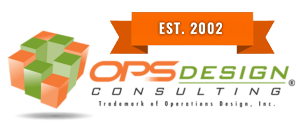Cubic Velocity by SKU and Cubic Inventory by SKU and aren’t just metrics—they’re the key to more effective warehouse automation. In the age of e-commerce acceleration and omnichannel complexity, the modern warehouse must do more than store product—it must operate as a finely tuned logistics engine. Whether you’re designing a new distribution center (DC) or reengineering an existing one, success begins not with automation selection or material handling equipment choices , but with data. And among the most valuable—and often overlooked—metrics are Cubic Inventory by SKU and Cubic Velocity by SKU.
Laying the Foundation: It’s All About the Data
Any competent warehouse design starts with a deep forensic dive into operational data. That means gathering at least a year’s worth of SKU-level sales history, a complete item master (including dimensions and weights), and detailed inventory snapshots representing average and peak levels. This isn’t light spreadsheet work; these datasets often contain millions of records and require robust data platforms to manage.
Alongside these transactional files, engineers must also document everything from inbound receiving to outbound shipping—existing processes, system architecture, physical infrastructure, and labor usage. It’s a critical step: understanding what currently works, what doesn’t, and where real-world challenges and opportunities exist.
Once this baseline model is validated (i.e., it matches actual volumes, service levels, and costs), forecast factors—growth projections, SKU proliferation, channel expansion, etc. —can be applied. The result is a forward-looking operational model that defines requirements not just for today, but for the next five years (typically). Then a gap analysis between current state and future performance goals (operational and financial) can be evaluated.
Understanding Cubic Inventory and Cubic Velocity
So how do Cubic Inventory and Cubic Velocity at SKU level fit in?
- Cubic Inventory by SKU measures the physical space each SKU occupies in the warehouse, calculated as:
On-hand quantity × Unit volume (in cubic feet)
- Cubic Velocity by SKU quantifies how many cubic feet of a SKU moves (ships) over time:
Units shipped × Unit volume (over a defined period)
While simple in concept, these metrics are transformative in practice. They guide everything from slotting logic to equipment selection and storage density decisions. They help determine the ideal home for every SKU in your facility.
Designing Around the Data
With these metrics in hand, SKU profiles can be mapped to the most appropriate storage and picking strategies:
- High-Cube, Low-Velocity Items: These are best suited for dense, deep storage systems like drive-in racks, floor stacks, or double-deep pallet racks. To improve pick efficiency, forward-pick locations can be established and replenished based on demand.
- Low-Cube, Low-Velocity Items: These products are ideal for shelving, decked racking, or carton flow racks—systems that conserve space while keeping slow movers accessible.
- High-Velocity Items: These may justify investment in automation, such as goods-to-person systems or robotic picking solutions, especially when combined with small cube profiles.
Matching each SKU to its optimal storage method reduces wasted space, shortens travel time, and boosts throughput. It’s not just about cost savings—it’s about engineering a more agile, scalable facility. Alternatives must be compared to the base model and to each other.
From Metrics to Models: Building the Right Solution
Once SKUs are classified by cube and velocity, the engineering team can begin modeling design alternatives. These scenarios must be evaluated across a range of criteria including:
- Capital investment
- Labor and recurring operating costs
- Storage capacity
- Order fulfillment throughput
- Flexibility and scalability
- Risk and resilience
This is where data turns into strategy. It’s how you move from “what we have” to “what we need”—and ultimately to “what will give us competitive advantage.”
The Bottom Line: It Starts with the Basics
There’s no shortcut to a high-performing warehouse. Every scalable, cost-efficient, and future-ready design starts with the same two building blocks: Cubic Inventory by SKU and Cubic Velocity by SKU. They aren’t just metrics—they’re the key to unlocking smarter layouts, better labor planning, and more effective automation.
So before investing in racking systems, robotics, or conveyor layouts, start by understanding how your product behaves. Your data already holds the answers.
Looking for Practical Tools to Get Started?
Download our Pick Module Selection Matrix—a practical decision-support tool that matches SKU characteristics to ideal picking and storage solutions.
Visit the Resources tab to access your copy.


